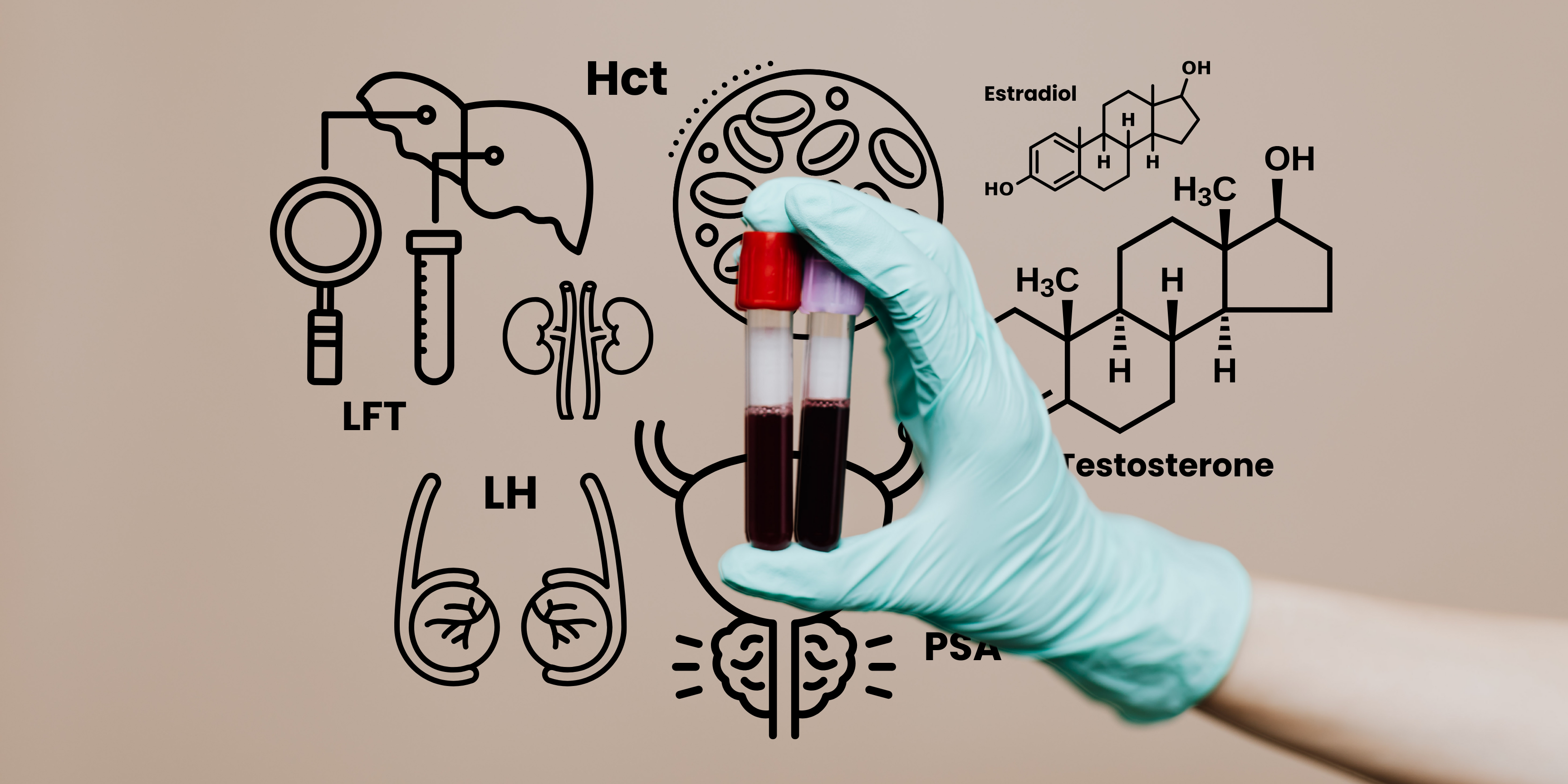Many men experiencing symptoms of low testosterone assume that a single total testosterone blood test is enough to determine if they need testosterone replacement therapy (TRT). However, relying solely on total testosterone levels can be misleading. A complete hormone evaluation is essential to ensure an accurate diagnosis and safe, effective treatment.
Why Total Testosterone Alone Is Insufficient
1. Free Testosterone Matters
Total testosterone includes both bound and free testosterone, but free testosterone is the active form available for use by the body. Some men may have normal total testosterone levels but still experience symptoms due to low free testosterone. Measuring both gives a clearer picture of testosterone availability.
2. SHBG Affects Testosterone Availability
Sex Hormone-Binding Globulin (SHBG) binds to testosterone, affecting how much free testosterone is available.
- High SHBG = Less free testosterone, even if total testosterone is normal.
- Low SHBG = More free testosterone, which may influence TRT decisions.
3. Estradiol (E2) and Hormonal Balance
Testosterone converts into estradiol (E2) through aromatization. Balanced estradiol levels are crucial, as too much or too little can lead to side effects like fatigue, mood swings, water retention, or low libido. Checking E2 levels ensures TRT is properly adjusted.
4. LH & FSH Indicate the Cause of Low Testosterone
Luteinizing hormone (LH) and follicle-stimulating hormone (FSH) help determine whether low testosterone is due to:
- Primary hypogonadism (testicular failure)
- Secondary hypogonadism (pituitary or hypothalamic dysfunction)
If testosterone deficiency is secondary, alternative treatments like Clomid or hCG may be considered instead of TRT.
5. Blood Count & Hematocrit for Safety
TRT stimulates red blood cell production, which can lead to thicker blood (polycythemia), increasing the risk of heart-related issues. A complete blood count (CBC) and hematocrit test help monitor for this condition and ensure safe TRT use.
6. PSA & Prostate Health
Men over 40 years old or those with a history of prostate issues should check their prostate-specific antigen (PSA) levels before starting TRT. TRT can slightly increase PSA levels, so baseline testing helps monitor prostate health over time.
7. Prolactin Can Reveal Underlying Issues
High prolactin levels can suppress testosterone production and may indicate a pituitary tumor (prolactinoma). Measuring prolactin ensures that the cause of low testosterone isn’t being overlooked.
8. Liver & Kidney Function Tests
Testosterone is metabolized by the liver and kidneys, so their function must be assessed to prevent potential complications and ensure the body can process TRT effectively.
Conclusion
Starting TRT based only on total testosterone levels can lead to misdiagnosis, incorrect treatment, and unnecessary side effects. A comprehensive hormone panel ensures a safe, effective treatment plan tailored to individual needs. If you’re considering TRT, consult with a specialist to get a complete evaluation before making a decision.







